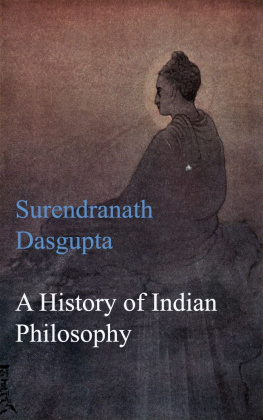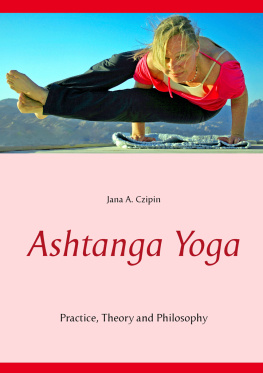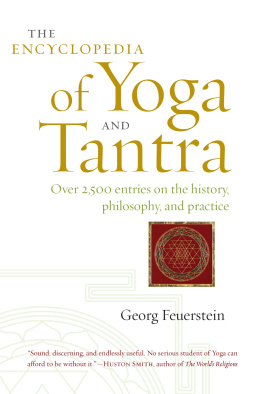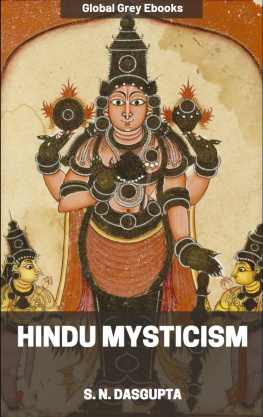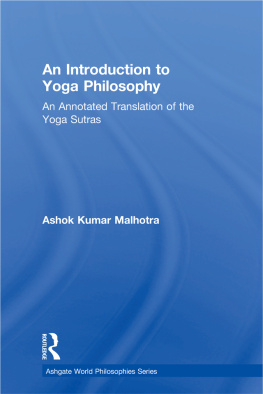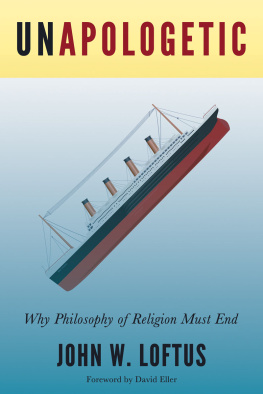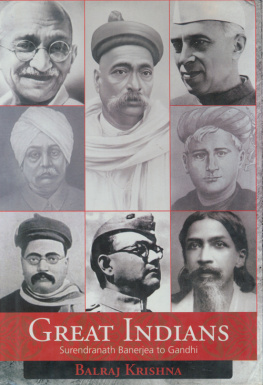Trbners Oriental Series
YOGA
Trbners Oriental Series
INDIA: RELIGION AND PHILOSOPHY
In 10 Volumes
I | The Snkhya Aphorisms of Kapila James R Ballantyne |
II | The Religions of India A Barth |
III | The Ordinances of Manu Arthur Coke Burnell |
IV | The Sarva-Darana-Sagraha E B Cowell and A E Gough |
V | Yoga Surendranath Dasgupta |
VI | Hind Philosophy John Davies |
VII | The Bhagavad Gt John Davies |
VIII | A Classical Dictionary of Hindu Mythology and Religion, Geography, History and Literature John Dowson |
IX | The Philosophy of the Upanishads and Ancient Indian Metaphysics Archibald Edward Gough |
X | A Manual of Hindu Pantheism G A Jacob |
YOGA
AS PHILOSOPHY AND RELIGION
SURENDRANATH DASGUPTA
First published in 1924 by
Routledge, Trench, Trbner & Co Ltd
Reprinted in 2000, 2002 by
Routledge
2 Park Square, Milton Park, Abingdon, Oxon, OX14 4RN
Transferred to Digital Printing 2007
Routledge is an imprint of the Taylor & Francis Group
1924 Surendranath Dasgupta
All rights reserved. No part of this book may be reprinted or reproduced or utilized in any form or by any electronic, mechanical, or other means, now known or hereafter invented, including photocopying and recording, or in any information storage or retrieval system, without permission in writing from the publishers.
The publishers have made every effort to contact authors/copyright holders of the works reprinted in Trbners Oriental Series. This has not been possible in every case, however, and we would welcome correspondence from those individuals/companies we have been unable to trace.
These reprints are taken from original copies of each book. In many cases the condition of these originals is not perfect. The publisher has gone to great lengths to ensure the quality of these reprints, but wishes to point out that certain characteristics of the original copies will, of necessity, be apparent in reprints thereof.
British Library Cataloguing in Publication Data
A CIP catalogue record for this book is available from the British Library
Yoga
ISBN 0-415-24518-4
India: Religion and Philosophy: 10 Volumes
ISBN 0-415-24291-6
Trbners Oriental Series
ISBN 0-415-23188-4
YOGA
AS PHILOSOPHY AND RELIGION
BY
SURENDRANATH DASGUPTA
M.A., PH.D.(CAL.), PH.D.(CANTAB.)
AUTHOR OF A HISTORY OF INDIAN PHILOSOPHY, ETC.
Professor of Philosophy, Presidency College, Calcutta
Late Professor of Sanskrit, Chittagong College
Late Lecturer in the University of Cambridge
LONDON:
ROUTLEDGE, TRENCH, TRUBNER & CO., LTD NEW YORK: E. P. DUTTON & CO.
1924
AS A HUMBLE TOKEN
OF DEEPEST REGARD AND GRATEFULNESS
TO THE
MAHARAJA SIR MANINDRACHANDRA NUNDY
K.C.I.E.
WHOSE NOBLE CHARACTER AND SELF-DENYING CHARITIES
HAVE ENDEARED HIM TO THE PEOPLE OF BENGAL
AND
WHO SO KINDLY OFFERED ME HIS WHOLE-HEARTED
PATRONAGE IN
ENCOURAGING MY ZEAL FOR LEARNING AT A TIME
WHEN I WAS IN SO GREAT A NEED OF IT
PREFACE
THIS little volume is an attempt at a brief exposition of the philosophical and religious doctrines found in Patajalis Yoga-stra as explained by its successive commentaries of Vysa, Vcaspati, Vijna Bhikshu, and others. The exact date of Patajali cannot be definitely ascertained, but if his identity with the other Patajali, the author of the Great Commentary (Mahbhshya) on Pinis grammar, could be conclusively established, there would be some evidence in our hands that he lived in 150 B.C. I have already discussed this subject in the first volume of my A History of Indian Philosophy, where the conclusion to which I arrived was that, while there was some evidence in favour of their identity, there was nothing which could be considered as being conclusively against it. The term Yoga, according to Patajalis definition, means the final annihilation (nirodha) of all the mental states (cittavtti) involving the preparatory stages in which the mind has to be habituated to being steadied into particular types of graduated mental states. This was actually practised in India for a long time before Patajali lived; and it is very probable that certain philosophical, psychological, and practical doctrines associated with it were also current long before Patajali. Patajalis work is, however, the earliest systematic compilation on the subject that is known to us. It is impossible, at this distance of time, to determine the extent to which Patajali may claim originality. Had it not been for the labours of the later commentators, much of what is found in Patajalis aphorisms would have remained extremely obscure and doubtful, at least to all those who were not associated with such ascetics as practised them, and who derived the theoretical and practical knowledge of the subject from their preceptors in an upward succession of generations leading up to the age of Patajali, or even before him. It is well to bear in mind that Yoga is even now practised in India, and the continuity of traditional instruction handed down from teacher to pupil is not yet completely broken.
If anyone wishes methodically to pursue a course which may lead him ultimately to the goal aimed at by Yoga, he must devote his entire life to it under the strict practical guidance of an advanced teacher. The present work can in no sense be considered as a practical guide for such purposes. But it is also erroneous to thinkas many uninformed people dothat the only interest of Yoga lies in its practical side. The philosophical, psychological, cosmological, ethical, and religious doctrines, as well as its doctrines regarding matter and change, are extremely interesting in themselves, and have a definitely assured place in the history of the progress of human thought; and, for a right understanding of the essential features of the higher thoughts of India, as well as of the practical side of Yoga, their knowledge is indispensable.
The Yoga doctrines taught by Patajali are regarded as the highest of all Yogas (Rjayoga), as distinguished from other types of Yoga practices, such as Hahayoga or Mantrayoga. Of these Hahayoga consists largely of a system of bodily exercises for warding off diseases, and making the body fit for calmly bearing all sorts of physical privations and physical strains. Mantrayoga is a course of meditation on certain mystical syllables which leads to the audition of certain mystical sounds. This book does not deal with any of these mystical practices nor does it lay any stress on the performance of any of those miracles described by Patajali. The scope of this work is limited to a brief exposition of the intellectual foundationor the theoretical sideof the Yoga practices, consisting of the philosophical, psychological, cosmological, ethical, religious, and other doctrines which underlie these practices. The affinity of the system of Skhya thought, generally ascribed to a mythical sage, Kapila, to that of Yoga of Patajali is so great on most important points of theoretical interest that they may both be regarded as two different modifications of one common system of ideas. I have, therefore, often taken the liberty of explaining Yoga ideas by a reference to kindred ideas in Skhya. But the doctrines of Yoga could very well have been compared or contrasted with great profit with the doctrines of other systems of Indian thought. This has purposely been omitted here as it has already been done by me in my





